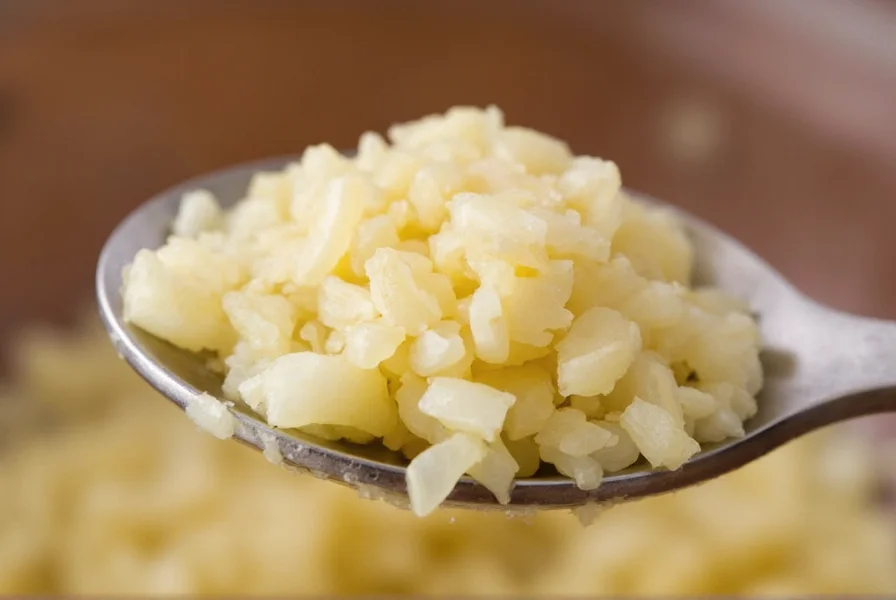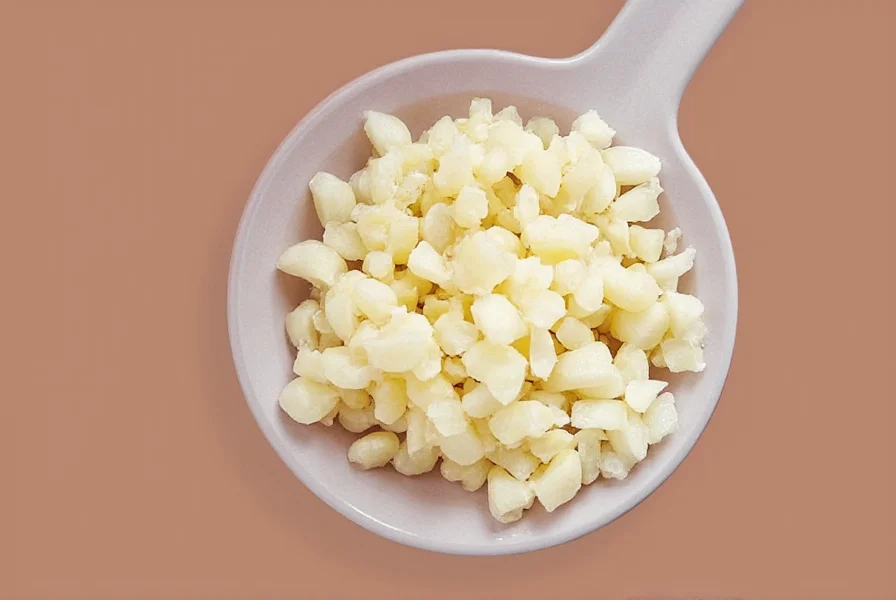When following recipes that specify minced garlic in teaspoons rather than cloves, understanding this conversion is essential for achieving the perfect flavor balance in your dishes. Many home cooks struggle with this common kitchen measurement question, especially when recipes don't account for the natural variability in garlic cloves.
Factors That Affect Garlic Measurements
The exact amount of minced garlic you'll get from a single clove depends on several variables:
- Clove size - Garlic bulbs contain cloves of varying sizes, from small inner cloves to large outer ones
- Preparation method - Hand-minced versus food processor minced produces different densities
- Packing - How tightly you pack the minced garlic into the measuring spoon
- Moisture content - Freshly harvested garlic contains more moisture than stored garlic
| Number of Cloves | Minced Garlic (Teaspoons) | Minced Garlic (Tablespoons) |
|---|---|---|
| 1 small clove | 1/4 tsp | - |
| 1 medium clove | 1/2 tsp | - |
| 1 large clove | 3/4 tsp | - |
| 3 cloves | 1 1/2 tsp | 1/2 tbsp |
| 6 cloves | 3 tsp | 1 tbsp |
Fresh Garlic vs. Pre-Minced Garlic in Jars
When converting cloves to teaspoons of minced garlic, it's important to note that fresh garlic and pre-minced jarred garlic aren't equivalent in flavor intensity. Jarred minced garlic often contains preservatives and has a milder flavor profile.
For the most accurate measurements and best flavor, always use fresh garlic when possible. The enzymatic reaction that creates garlic's characteristic flavor begins when cloves are crushed or minced, which is why freshly prepared garlic has superior taste compared to pre-minced alternatives.

Practical Measurement Tips
Here are some practical tips for measuring garlic accurately in your cooking:
- When precision matters - For delicate sauces or baking applications, use a measuring spoon to ensure accuracy
- When approximation works - For most savory dishes, the exact measurement isn't critical as garlic preferences vary
- Adjust for personal taste - If you prefer stronger garlic flavor, use the higher end of the measurement range
- Consider the recipe type - Italian dishes often use more garlic than French cuisine, for example
Professional chefs often recommend tasting as you go when working with garlic, as its potency can vary significantly based on growing conditions, storage time, and variety. The famous rocambole variety, for instance, tends to be more potent than standard supermarket garlic.

When Substitutions Are Necessary
If you don't have fresh garlic available, here are some reliable substitutions to consider:
- Garlic powder - 1/8 teaspoon powder equals one fresh clove
- Garlic salt - 1/4 teaspoon equals one fresh clove (reduce other salt in recipe)
- Garlic paste - 1/2 teaspoon paste equals one medium clove
Remember that these substitutes have different flavor profiles and intensity levels compared to fresh minced garlic. When converting recipes that call for minced garlic measurements to use garlic powder or other substitutes, you'll need to adjust quantities accordingly.
Understanding Garlic in International Cuisine
Different culinary traditions use garlic in distinctive ways. Mediterranean recipes often call for larger quantities of garlic compared to East Asian cuisines, which typically use more subtle garlic notes. When adapting recipes from different cultures, consider these traditional approaches to garlic usage.
For example, authentic Italian aglio e olio relies heavily on garlic flavor, while Japanese tonkatsu sauce uses garlic more sparingly. Understanding these cultural differences can help you determine whether to use the lower or higher end of the minced garlic measurement range.
FAQ: Common Garlic Measurement Questions
How many tablespoons of minced garlic equals one clove?
One medium garlic clove yields approximately 1/6 tablespoon of minced garlic (since 3 teaspoons equal 1 tablespoon, and one clove equals about 1/2 teaspoon). For practical measuring, 3 medium cloves equal approximately 1/2 tablespoon of minced garlic.
Does the age of garlic affect the minced measurement?
Yes, older garlic tends to dry out, which means you'll get slightly less volume when minced compared to fresh garlic. As garlic ages, it loses moisture content, so one older clove might yield closer to 1/4 teaspoon rather than the standard 1/2 teaspoon for a medium fresh clove.
How much minced garlic equals one teaspoon?
Approximately 2 medium garlic cloves yield 1 teaspoon of minced garlic. However, this can range from 1.5 large cloves to 3 small cloves depending on size variations. For precise recipes, it's best to measure the minced garlic rather than count cloves.
Can I use garlic paste instead of fresh minced garlic?
Yes, you can substitute garlic paste for fresh minced garlic at a 1:1 ratio by volume. Half a teaspoon of garlic paste equals one medium fresh garlic clove. However, note that garlic paste often contains citric acid or other preservatives that can slightly alter the flavor profile compared to freshly minced garlic.
Why do recipes specify minced garlic in teaspoons rather than cloves?
Recipes use teaspoon measurements for minced garlic to provide more consistent results, as garlic cloves vary significantly in size. A recipe developer testing with large cloves might create a dish that's overpowering when home cooks use smaller cloves. Teaspoon measurements offer more precision for repeatable results, especially in baking and delicate sauces where garlic quantity critically affects the final flavor.











 浙公网安备
33010002000092号
浙公网安备
33010002000092号 浙B2-20120091-4
浙B2-20120091-4